Related Research Articles

Leroy Robert "Satchel" Paige was an American professional baseball pitcher who played in Negro league baseball and Major League Baseball (MLB). His career spanned five decades and culminated with his induction into the National Baseball Hall of Fame.

William Hendrick Foster was an American left-handed pitcher in baseball's Negro leagues in the 1920s and 1930s, and had a career record of 110–56. He was elected to the Baseball Hall of Fame in 1996. Foster was the much-younger half-brother of Rube Foster, a Negro league player, pioneer, and fellow Hall of Famer.
The Negro World Series was a post-season baseball tournament that was held from 1924 to 1927 and from 1942 to 1948 between the champions of the Negro leagues, matching the mid-western winners against their east-coast counterparts. The series was also known as the Colored World Series, especially during the 1920s, and as the Negro League World Series, in more recent books, though contemporary black newspapers usually called it simply, the "World Series", without any modification. A total of eleven Series were contested in its prime, which ultimately saw nine teams compete for a championship and seven who won at least one. The Homestead Grays were the winningest and most present team in the tournament, winning three times in five appearances, while Dave Malarcher and Candy Jim Taylor won the most titles as manager with two each.

The Kansas City Monarchs were the longest-running franchise in the history of baseball's Negro leagues. Operating in Kansas City, Missouri, and owned by J. L. Wilkinson, they were charter members of the Negro National League from 1920 to 1930. J. L. Wilkinson was the first white owner at the time of the establishment of the team. In 1930, the Monarchs became the first professional baseball team to use a portable lighting system which was transported from game to game in trucks to play games at night, five years before any MLB team did. The Monarchs won ten league championships before integration, and triumphed in the first Negro League World Series in 1924. The Monarchs had only one season in which they did not have a winning record. The team produced more major league players than any other Negro league franchise. It was disbanded in 1965.

Wilber Joe Rogan, also known as "Bullet Joe", was an American pitcher, outfielder, and manager for the Kansas City Monarchs in the Negro baseball leagues from 1920 to 1938. Renowned as a two-way player who could both hit and pitch successfully, one statistical compilation shows Rogan winning more games than any other pitcher in Negro leagues history and ranking fourth highest in career batting average. He was elected to the Baseball Hall of Fame in 1998.

Kansas City Municipal Stadium was an American baseball and football stadium in the central United States, located in Kansas City, Missouri. It was located at the corner of Brooklyn Avenue and E. 22nd Street.
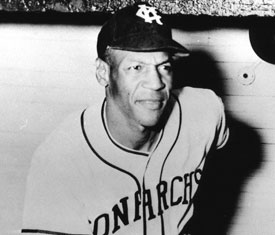
John Jordan "Buck" O'Neil Jr. was an American first baseman and manager in the Negro American League, mostly with the Kansas City Monarchs. After his playing days, he worked as a scout and became the first African American coach in Major League Baseball. In his later years he became a popular and renowned speaker and interview subject, helping to renew widespread interest in the Negro leagues, and played a major role in establishing the Negro Leagues Baseball Museum in Kansas City, Missouri. He was elected to the Baseball Hall of Fame in 2022 as an executive.

The East–West All-Star Game was an annual all-star game for Negro league baseball players. The game was the brainchild of Gus Greenlee, owner of the Pittsburgh Crawfords. In 1933 he decided to emulate the Major League Baseball All-Star Game, using Negro league players. Newspaper balloting was set up to allow the fans to choose the starting lineups for that first game, a tradition that continued through the series' end in 1962. Unlike the white All-Star game which is played near the middle of the season, the Negro All-Star game was held toward the end of the season.

Andrew Lewis Cooper, nicknamed "Lefty", was an American left-handed pitcher in baseball's Negro leagues. He was elected to the Baseball Hall of Fame in 2006. An alumnus of Paul Quinn College, Cooper played nine seasons for the Detroit Stars and ten seasons for the Kansas City Monarchs, and briefly played for the Chicago American Giants. The Texan was 6 feet 2 inches (188 cm) tall and weighed 220 pounds.
The Mineola Black Spiders, also called the Texas Black Spiders, were an independent, generally all-black baseball team. They originated in and were loosely based from Mineola, Texas.
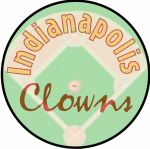
The Indianapolis Clowns were a professional baseball team in the Negro American League. Tracing their origins back to the 1930s, the Clowns were the last of the Negro league teams to disband, continuing to play exhibition games into the 1980s. They began play as the independent Ethiopian Clowns, joined the Negro American League as the Cincinnati Clowns and, after a couple of years, relocated to Indianapolis. Hank Aaron was a Clown for a short period, and the Clowns were also one of the first professional baseball teams to hire a female player.
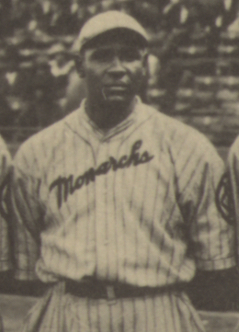
Oscar "Heavy" Johnson (1895–1960) was a baseball player in the Negro leagues. He played catcher and outfielder. Johnson was one of the Negro league's foremost power hitters in the 1920s, reportedly weighing 250 pounds, and known for hitting home runs. Longtime MLB umpire Jocko Conlan once said that Johnson "could hit a ball out of any park."
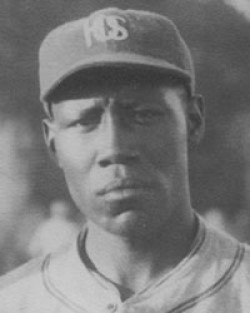
Theodore M. "Bubbles" Anderson was an American baseball player in the Negro leagues. He played primarily second base for the Kansas City Monarchs, Washington Potomacs, Birmingham Black Barons, and the Indianapolis ABCs from 1922 until 1925. He played for the minor Negro league Denver White Elephants from 1920 through 1921 and again from 1932 to 1933.

George Alexander "Sharky" Sweatt was an American second baseman in Negro league baseball. He played for the Kansas City Monarchs and Chicago American Giants from 1922 to 1927.

Benjamin Franklin Adams was an American Negro league pitcher in the 1950s and 1960s.
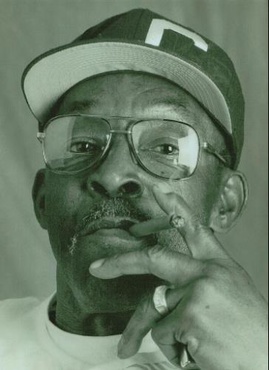
Melvin Luther Duncan, nicknamed "Buck", was an American Negro leagues baseball player. He was born in 1929. He played from 1949 to 1956. In the United States, he played with the Kansas City Monarchs and the Detroit Stars. In Canada, he played for the Kitchener Panthers in early 1950s as part of the Intercounty Baseball League. Melvin was a pitcher. He was a member of the US Army and played on the Army Team. Duncan additionally played in Venezuela. He was honored in 2014 for his participation in baseball.

Jesse Horace Williams, nicknamed "Bill", was an American Negro league shortstop for the Kansas City Monarchs and Indianapolis Clowns between 1939 and 1950.
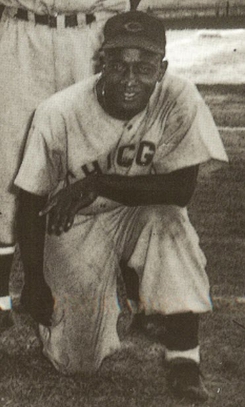
Winfield Scott Welch, nicknamed "Gus" and "Moe", was an American Negro league outfielder and manager. Welch spent most of his playing career with minor Negro teams. He is best known as a successful manager, lauded by some as "the Connie Mack of Negro baseball"
The Denver White Elephants was a semi-professional independent African-American baseball team in Denver, Colorado, United States. The team was active from 1915 to 1935, and practiced at Broadway Park at 6th and Acoma Streets in Denver. The team played exhibition games against White teams. It was owned and led by Albert Henderson Wade Ross (1884–1939), a businessman who ran the Rossonian Hotel in Denver's Five Points neighborhood.
References
- ↑ Cieradkowski, Gary (2015). The League of Outsider Baseball: An Illustrated History of Baseball's Forgotten Heroes. Touchstone of Simon & Schuster. p. 220. ISBN 9781476775234.
- ↑ Young, William A. (2016-11-07). J.L. Wilkinson and the Kansas City Monarchs: Trailblazers in Black Baseball. McFarland. p. 90. ISBN 978-1-4766-6299-2.